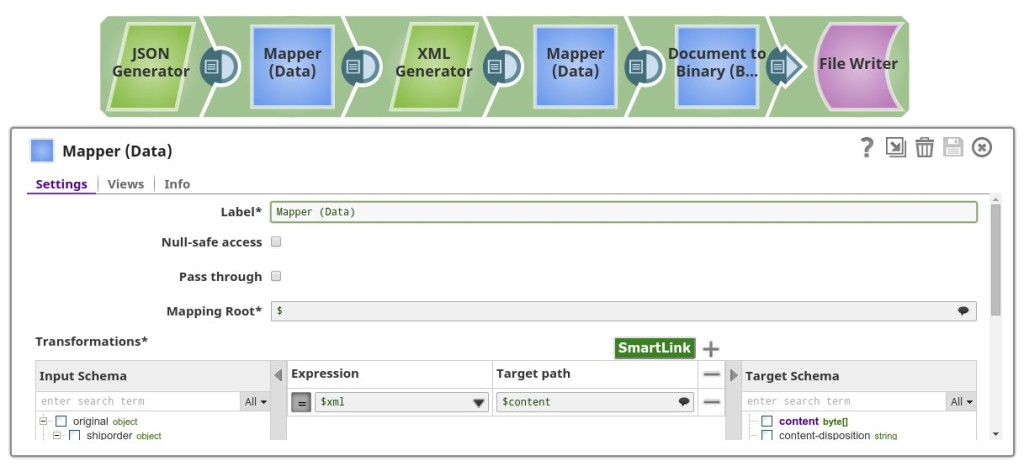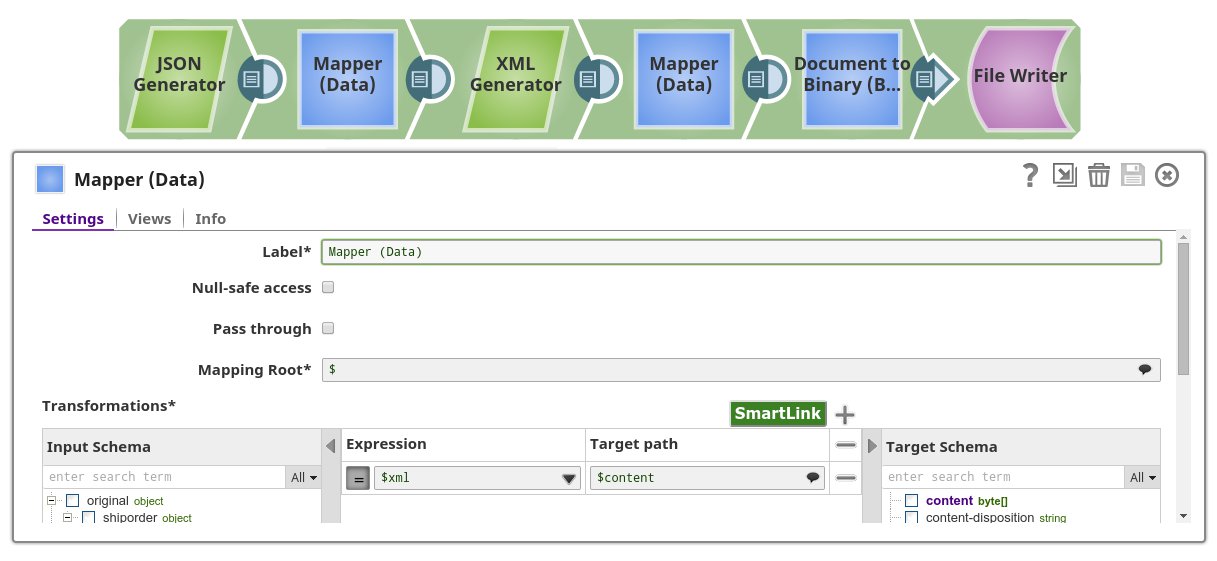In part two of this series, we covered how to map to the JSON schema upstream. In this post, we will cover how to validate the generated XML against the XSD.
Example 3: Writing the Generated Content to File
Sometimes one wants to write the generated XML to a file. For that use case we provide a DocumentToBinary Snap which can take the content and convert it to binary data object, which then can be written to a file, e.g using a File Writer Snap.
Above we map XML to the content field of the DocumentToBinary Snap, and set the Encode or Decode option on the DocumentToBinary Snap to NONE.
This outputs then one binary document for each order. We can then write it to a directory. (Careful, here you’d want to use the append option, since you potentially would be writing two files to the same directory, *which will be supported soon for SnapLogic’s file system) or you can use an expression such as Date.now() to write individual files for each incoming binary data object).
In our final part of this series, we will demonstrate how the XML Generator Snap creates one serialized XML string for every input document.
Additional Resources:










